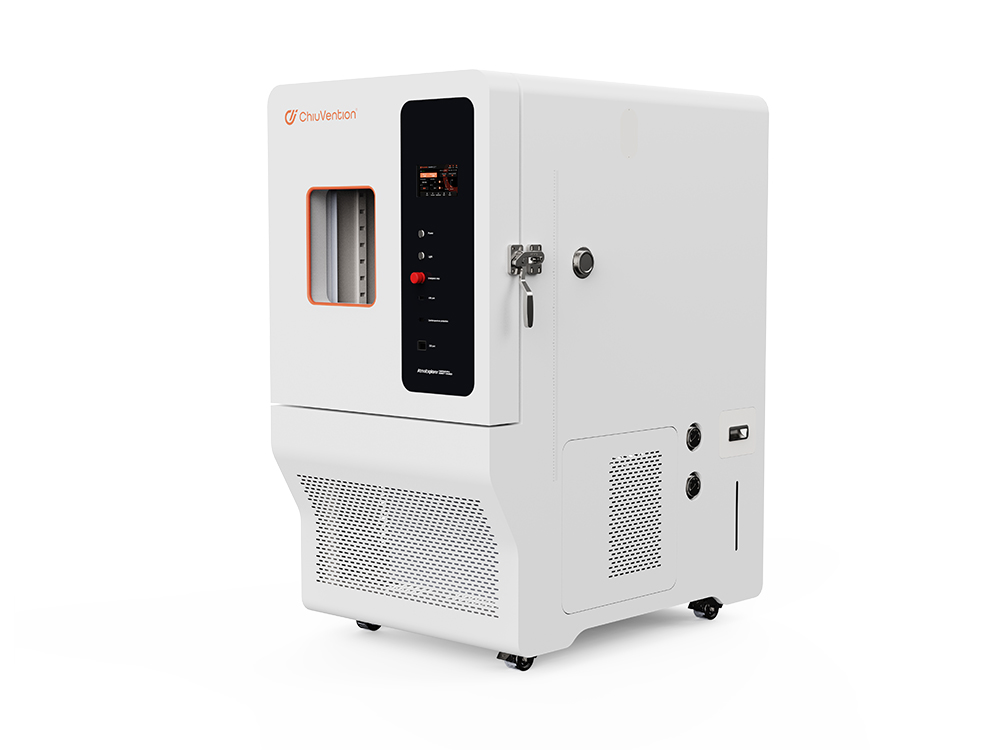When selecting a hot and humid box, pay attention to its performance parameters. These include the temperature range, uniformity, volatility, warming speed, and cooling rate. They also include other factors. They determine if the box can meet the test’s conditions.
Uniformity is important in these factors. We need to pay special attention to it. We will often encounter problems about uniformity in testing. The uniformity of a constant temperature and humidity box directly affects its performance. It must usually meet national standards. The standard for box temperature uniformity is ± 2 ℃. But, as environmental test equipment advances, today’s boxes can reach ± 0.5 ℃ ~ ± 0.2 ℃. Let’s examine why the temperature and humidity vary in the climate-controlled chamber.
Test target influence
The chamber has a constant temperature and humidity. Proximity to samples can disrupt heat convection, compromising temperature uniformity. For example, if you put in LED lighting products, the product itself makes light and heat. The heat adds to the thermal load. Then, it has a big impact on temperature uniformity.
Insulation material
Insulation material ensures the key uniformity of temperature and humidity. If the material is not handled well, it will cause too much deviation. We generally choose polyurethane insulation + glass fibre.
Wind circulation system
The box has constant temperature and humidity. Wind circulation improves its uniformity. Behind the air conditioning duct in the test area, a heating tube heats the air. A high-temperature motor stirs the wind wheel. It has a long shaft and is made of stainless steel. A multi-winged centrifugal motor drives it. Then, it exits through an adjustable louvre outlet to achieve temperature uniformity.
Difference in the internal structure of the test chamber
For example, the constant temperature and humidity box disrupts the internal structure. It makes space planning hard. It is hard to make a uniform symmetrical structure. This disruption affects indoor heat convection. It leads to errors in internal temperature uniformity.
This level mainly shows in the planning and processing of sheet metal. It includes things like planning air ducts and placing heat pipes. These are for keeping the temperature and humidity constant in box makers. Details like fan power affect the box’s temperature.
Heat transfer
Difference in heat transfer coefficient of the inner wall
The studio’s six sides have different heat transfer coefficients. Threading, detection, and test holes in some materials create localized heat transfer. They make the box temperature uneven. This affects the box wall’s heat transfer, hurting temperature uniformity.
Air convection inside the box
Improper placement or size of test objects can block air flow. This leads to temperature deviations in the test chamber. For example, placing the test product next to the air duct will not only hurt wind circulation. It will also greatly harm temperature uniformity.
The tests require the products to fill at most 1/3 of the area. Also, we can’t pack the products tightly. This keeps air around and between them to form a convection.
Samples can’t block the air outlet. They must be far from the outlet. They can’t be near the air duct. This would disrupt the wind. Place samples steady to keep the wind wheel balanced and in a uniform wind.
Box sealing
Customize the seal with seams. If not, a constant temperature and humidity box will be needed if the door leaks. The seal is key for temperature uniformity in the test box. So, it has strict requirements. It must handle high and low temperatures.
So, what measures can we take to improve the temperature uniformity of the test box?
01Pay attention to the sealing of the box
To prevent local air leakage, choose the best thermal insulation. Thick insulation reduces heat loss. Use thermal isolation to connect the box liner and shell to reduce local heat leakage.
02 Pay attention to the specimen volume, weight and placement in the test box workspace
The standards say the specimen should take up less than 1/5 of the studio. This leaves enough space for ventilation. The specimen’s area on the windward side should be less than 1/3 of the windward cross-section. This helps the wind flow. These rules are for the box’s temperature uniformity. The deviation must not exceed the standard. They play a good role.
03Reduce the temperature difference. Increase the amount of air
Lessen the temperature difference. This reduces the impact of the airflow. It will lower the impact on the chamber’s temperature field. This change can better protect the temperature difference. More air reduces the temperature difference. Eliminate indoor air flow dead zones.
04Increase the air velocity under the conditions permitted by the test method
This will enhance air flow in the chamber and eliminate the dead zone. This will make the chamber’s temperature uniform.
05Increase the control accuracy of the constant temperature and humidity chamber
Minimize temperature fluctuations to reduce overall temperature deviation.
For warming, PID adjusts the heating power to reduce temperature fluctuation. For cooling, the thermal balance method reduces fluctuation. To do this, the refrigeration machine stays on to reach the set temperature. The controlled heating power balances the excess refrigeration capacity.
To avoid excessive thermal shock, don’t waste energy. You can use these measures to reduce cooling. They cut the cooling, so you need less heating. This saves energy and improves control.
The position of the temperature sensor has a greater impact on the control accuracy. To make the temperature response sensitive, place the sensor near the air outlet. This improves accuracy, reduces fluctuations, and cuts deviation.
06 Adjusting the temperature field setting value can reduce the temperature deviation
The upper and lower temperature deviations are often unequal. Adjust equipment temperature if it exceeds the limit by less than half. This will make the adjusted deviation less than the permissible deviation.
For more environmental test chamber, Please visit: https://chiuventionclimatechamber.com
For more environmental test simulation programmes,environmental testing knowledge, instrument knowledge, and environmental testing laboratory knowledge, please contact us: [email protected]

